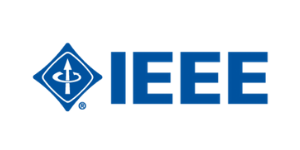Inkjet-Printing Technology: From a Droplet to Flexible Sensors, Integrated Circuits and Artificial Tissues
Inkjet printing technology encompasses the generation, control and deposition of 10-100 um liquid drops. Besides graphic printing applications, new opportunities for inkjet printing are starting to be exploited commercially in the manufacture of high value, high precision products. The applications include flexible electronics such as sensors and logic circuits as well as 3D biological tissues and organs for regenerative medicine. This talk covers from the fundamentals of inkjet printing to the wide range of electronical and biological applications. I will begin with the introduction of inkjet printing process from ink rheology to jet formation, drop impact and drying. Next how the inkjet printing can be used to fabricate thin-film transistors with a focus on 3D-stacked transistors and circuits as an innovative route for scaling in printed electronics, followed by flexible and wearable sensor arrays. Finally, another new application of inkjet – 3D printing of living cells and biomaterials for tissue engineering and regenerative medicine will be discussed. This part of the talk will show how living cells can be ejected from micron-sized nozzle and how multiple types of cells can be patterned into liquid-filled plate with high-resolution and high-precision. The fabrication processes and applications of inkjet-printed artificial skin and lung models will be introduced.
Aerosol jet printing with nanomaterial-based inks: A path towards recyclable, print-in-place electronics
For decades we’ve been hearing about the promise of printing electronics directly onto any surface. However, despite significant progress in the development of inks and printing processes, reports on fully, direct-write printed electronics continue to rely on excessive thermal treatments and/or fabrication processes that are external from the printer. In this tutorial, background information on aerosol jet printing – a versatile, direct-write printing technique – will be provided. The use of nanomaterial suspensions as electronic inks will also be reviewed, including carbon nanotubes (CNTs), graphene, and hexagonal boron nitride (hBN). Then, recent progress towards print-in-place electronics will be discussed; print-in-place involves loading a substrate into a printer, printing all needed layers, then removing the substrate with electronic devices immediately ready to test. To achieve this, significant advancements were made to minimize the intermixing of printed layers, drive down sintering temperature, and achieve sufficient thin-film electrical properties. It will be shown how inks from nanoscale materials have the potential to overcome some of the major hurdles for printed devices, particularly in yielding direct-printed thin films meeting target electrical performance, air stability, and process compatibility. In addition, three attractive options for direct-write printed insulating inks will be discussed: 2D hBN, ion gel, and crystalline nanocellulose. The appropriate design of these nanomaterial-based inks can enable the printing of fully recyclable electronics, where the constituent nanomaterials can be reclaimed and reused after initial printing and use in electronic devices. Overall, this tutorial should provide: 1) background for those less familiar with aerosol jet printing and nanomaterial-based inks; and 2) recent progress on print-in-place and recyclable electronics, from transistors to diverse sensors on virtually any substrate.




